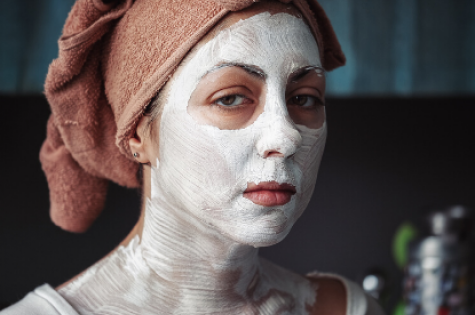Clear, radiant, younger-looking skin is the goal for most men and women and a chemical peel is the perfect way to get it. Non-invasive and more affordable than many other cosmetic treatments, chemical peels are a topical, potent solution for countless skin complaints ranging from pigmentation to breakouts, wrinkles, sun-damage, and rough, bumpy skin.
What is a chemical peel?
A chemical peel is a non-invasive, painless procedure involving the application of a topical solution of naturally derived acids and enzymes to improve the quality and appearance of your skin. The acids used are usually glycolic acid, salicylic acid or lactic acid. The type of chemical peel you will have is determined by your skin type, which will be assessed at the start of your consultation with a trained aesthetician.
Chemical peels accelerate your skin’s natural rejuvenation process
A chemical peel supercharges your skin’s natural cycle, speeding up the shedding of dull skin, exposing brighter, hydrated, younger-looking skin underneath. Usually, our skin goes through this cycle every 28 days itself, but as we age, this cycle becomes slower. Chemical peels recreate this cycle by sloughing off dead skin cells, brightening and tightening your skin. This is why regular chemical peels can help your skin stay brighter and younger-looking long term.
Chemical peels powerfully reduce breakouts
If your aesthetician has assessed your skin and decided you have acne-prone skin, they will likely recommend a salicylic acid (or BHA) peel. This type of peel penetrates deeply through the layers of your skin to clear away excess oil and congestion that cause breakouts. Thanks to the complex actions of the salicylic acid, the peel not only clears congestion but calms the inflammation usually accompanying breakouts.
Chemical peels treat oily skin by:
- Unclogging pores
- Minimizing the appearance of pores
- Killing P.acnes bacteria
- Relieving inflammation and redness
Chemical peels powerfully minimize wrinkles, fine lines and hydrate from the inside out
If you’re looking to treat the signs of ageing, your aesthetician may recommend a lactic acid (AHA) chemical peel. The active ingredients help breakdown proteins to stimulate cell regeneration and speed up the production of collagen. Stimulating these processes is particularly important, as they slow as you age.
Chemical peels help minimize ageing and dryness by:
- Exfoliating away dead skin cells
- Boosting collagen production
- Boosting skin cell turnover and therefore increasing hydration
Combination skin benefits from glycolic acid peels
Glycolic acid is one of the most famous chemical peel types, and it is often used on combination skin, helping clear acne and minimize fine lines all in one. Glycolic acid is also an AHA (from the alpha hydroxyl family) It’s a fruit acid derived from sugar cane, making it a powerful natural ingredient. It’s one of the most infamous peeling mediums as it has been around for decades, and is incredibly effective.
What to do before a chemical peel
As with most cosmetic treatments, there are a number of things you can do to ensure your treatment has the maximum effects on your skin:
- Avoid the sun two weeks before your treatment, and absolutely do not let your skin get sunburnt within that time. Wearing a hat, sunglasses and SPF50+ sunscreen is recommended.
- Use a retinoid cream one month before your treatment to prepare your skin for enhanced hydration.
- Prepare skin for even peel penetration by using an exfoliating cleanser or alpha-hydroxy acid cleanser in the two weeks before your treatment.
What to do after a chemical peel
- Absolutely avoid the sun on your face for at least two weeks, using SPF50+ sunscreen, and wearing a hat and sunglasses.
- Avoid putting irritating products on your skin including makeup, fragranced creams, and toners.
Are chemical peels safe?
Chemical peels are very safe procedures when administered by a trained aesthetician, but at-home treatments or treatments done by an untrained person can be dangerous. A trained aesthetician will apply a neutralization treatment at the end of your session to ensure the chemicals do not stay active longer than recommended. Without this step, you’re at risk of skin irritation, damage and even scarring.
Chemical peels are one of the most popular skin rejuvenating treatments on the market, as they’re non-invasive, pain-free, and exceptionally effective. Ensure you seek out a treatment aesthetician or skin therapist to administer your treatment, and you’ll be amazed at the results.
















__small.png)










